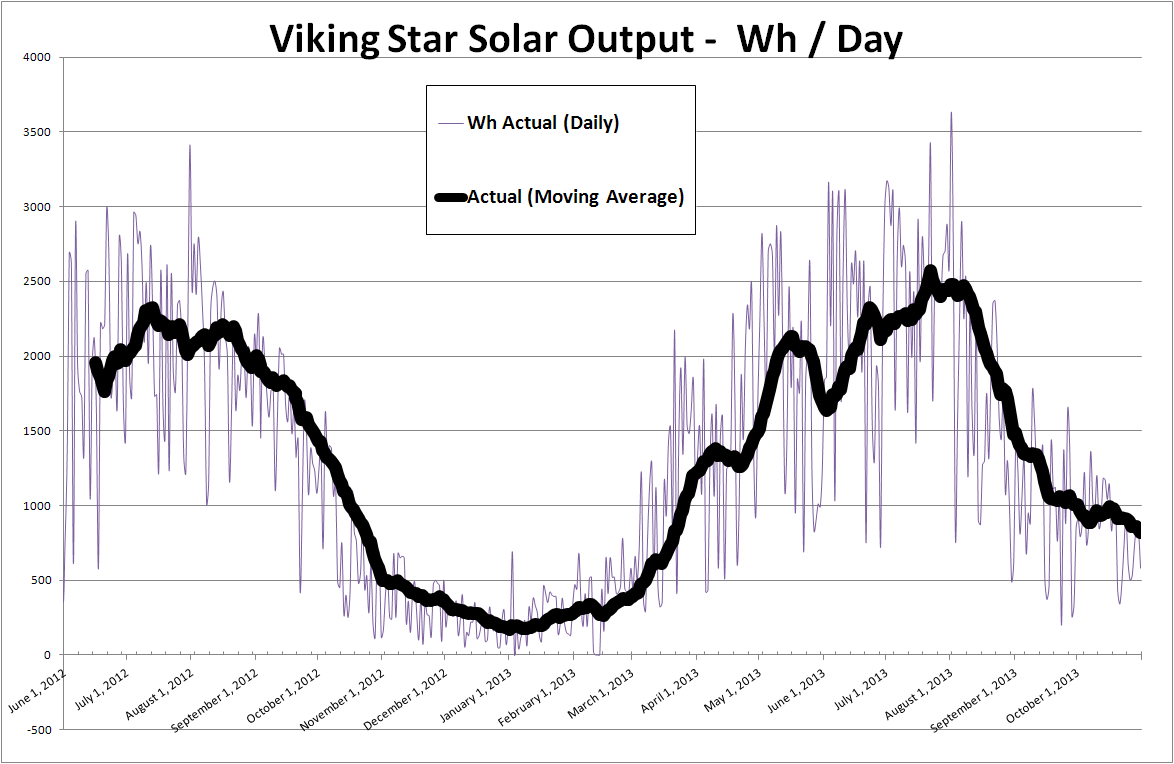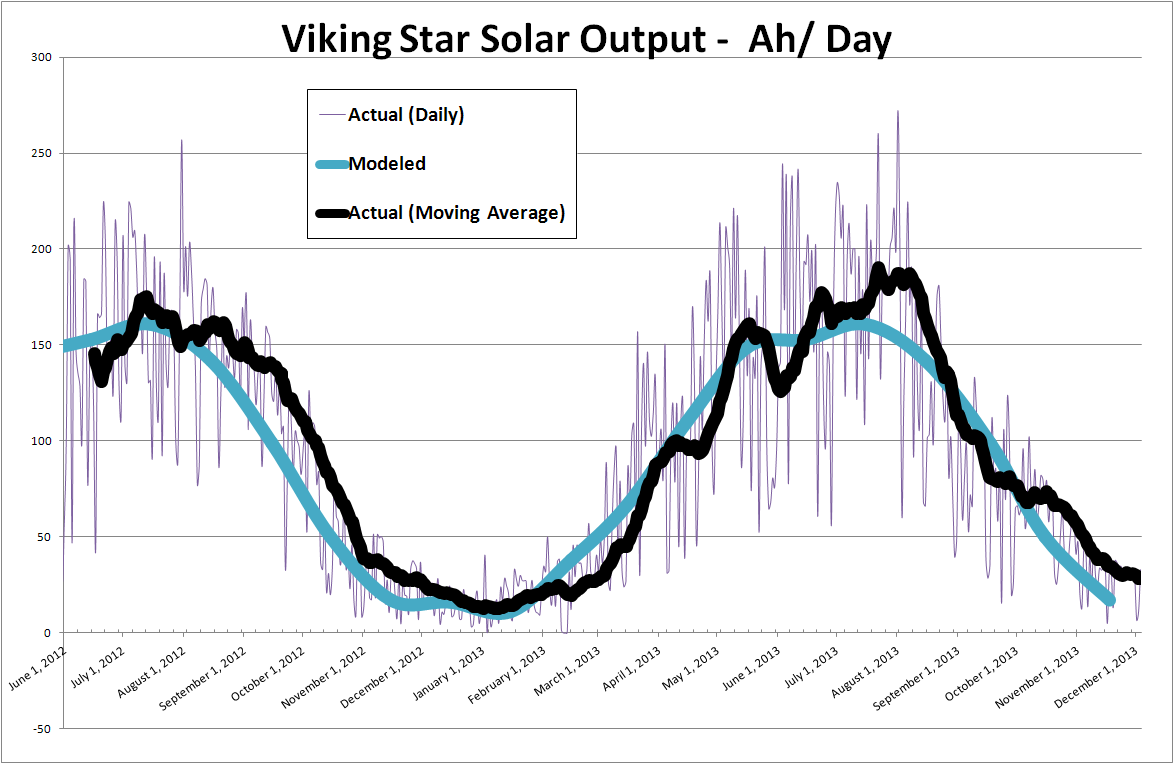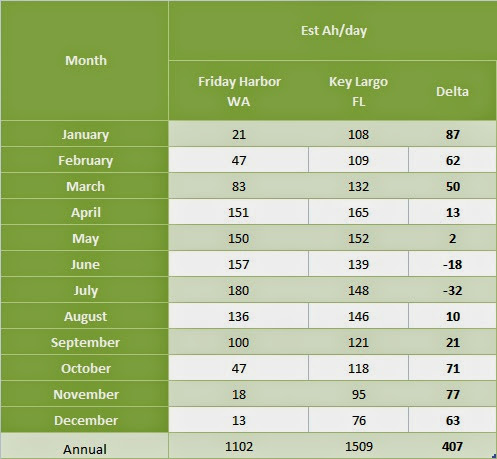healhustler
Guru
- Joined
- Oct 2, 2009
- Messages
- 5,198
- Location
- USA
- Vessel Name
- Bucky
- Vessel Make
- Krogen Manatee 36 North Sea
Wow...great info. Thanks to everyone contributing to this thread.....learned a lot.
If put off by Chinese manufacture, you`ll have trouble buying anything, though some will claim German design.
Peter, do you have a blog entry detailing either the system on the Nordy or the off grid system you use at home? I'm in the initial planning stage for a grid-tie system for our house.
Let me know if you have any particular questions and I'll help if I can.
The KEY to solar is the reefer load.
A boat with a high efficiency reefer is not that hard to go solar.
With a crap reefer the solar/battery/inverter costs get out of sight.
That is great data, and extremely helpful. I didn't see it mentioned, but I assume you are 12 volts, and in the PNW are generating around 1800 watts per day during the cruising season, or about 3.5 times the total rated wattage of the panels daily. Am I calculating that correctly?Well, it seems a lot of the basics have been covered here, so I will just add our experience. We installed two 245w panels a couple of years ago and are very happy with them. We are full time cruisers and away from the docks ‘out there’ from sometime in March until the beginning of November when things turn too stormy. (Except this summer where are taking a break to help out my Wife’s folks). As such, we produce all our electrify on-board. Given the cost of diesel generation I figure our solar system will pay for its self in under 4 years. And all that time I get to listen to less generator run time!
The biggest cost and hassle was the panels themselves. Costs have dropped massively from a few years ago, easily under $1/watt these days, but this is almost exclusively with the large ‘house size’ panels. The sweet spot for them raise every year and are perhaps around 280-290w these days? But the problem with them is shipping – it can cost as much, or more, to ship a couple of panels as the panels them self. Purchasing local is the key. We talked to a local supplier who added a couple extra panels to the next pallet stack he ordered and got panels for a very reasonable price. Being in CA, you likely have many local options to pick from.
Finally, our MPPT controller has data logging capability, and I have tracked a couple of years of actual output. The following link to our blog has a year’s worth of data posted, as well as a link to a modeling process where you can predict rather closely the exact power output for any setup you will be considering. (I just could not live with 'Lots', 'All We need', 'Recharges batteries by 10am', nor 'I have no idea' that I got when asking folks for their experiences)
mv.VikingStar: A Year with Solar, or is it: “Wait until he figures out what a monumental waste of money that was”. . . . .
Good luck to you!
-al-
No. I think sulfation comes from a chronic undercharged state rather than a slow rate of charge. Might be different if the rate is so low batts never get fully charged.One question I have - has anyone had any problems with solar putting a low amp charge into the batteries and causing sulfation?
Given that most electrical equipment on boats tend to lead a tough life, especially those in salt water, will a marine environment unduly affect the operation of the panels and their connectors?
That is great data, and extremely helpful. I didn't see it mentioned, but I assume you are 12 volts, and in the PNW are generating around 1800 watts per day during the cruising season, or about 3.5 times the total rated wattage of the panels daily. Am I calculating that correctly?
The KEY to solar is the reefer load.
A boat with a high efficiency reefer is not that hard to go solar.
With a crap reefer the solar/battery/inverter costs get out of sight.
Aside from refrigeration and freezer loads, we have been a bit surprise just how much computers can take - even our laptops. Doing a bit of work-from-the-boat, and the others face-book time we rack up a few hours a day. It can add up in Ah draw much quicker then I would have expected.
Another power hog is sat tv boxes.

Again, thank you so much for objective data. This is most compelling information. We use around 5 kw per day, mostly because we run Delfin pretty much like a condo on water. No problem if we are moving, but I have to recharge after 36 hours on the hook. I am pretty sure we could fit slightly more than you have room for over our pilot house and it looks like we would potentially get half of what we use from solar, and that is nothing to sneeze at. And, if we made an effort to conserve (not our strong suit), we might be able to get closer to breakeven. The fact you are in the PNW where we are is a huge advantage in the utility of your data, so again, much appreciated.I went back and created a chart from the Wh/day log file out of our TriStar MPPT controller. Also noted I have another Ah graph that includes about 18mo of data, a full cruising season + a major part of a 2nd one. Here are the two graphs:


Note the Ah one includes the predicted output as reference. For a bit more info on our experience with Solar panels, these graphs came from here:
mv.VikingStar: Solar
And Delfin, the average daily Wh output from our 480W (2x-240w) total of panels in 2013 was:
Apr: 1,410-Wh / day
May: 1,880-Wh / day
June: 2,194-Wh / day
July: 2,502-Wh / day
Aug: 1,695-Wh /day
Sept: 1,019-Wh / day
Refer to the above link for details on our setup.
Because we are away from the dock so much out of a year the panels are a no brainier. Doing everything again I likely would have doubled up on the panels, cut our house battery size in half - and perhaps forgo the DC generator... But the real answer comes down to individual usage patterns. For me, the best part of the above graphs is how the modeled/predicted output matched well the actual measured results. With tools out there it is easy to model any potential setup located about anywhere in the world.
-al-


